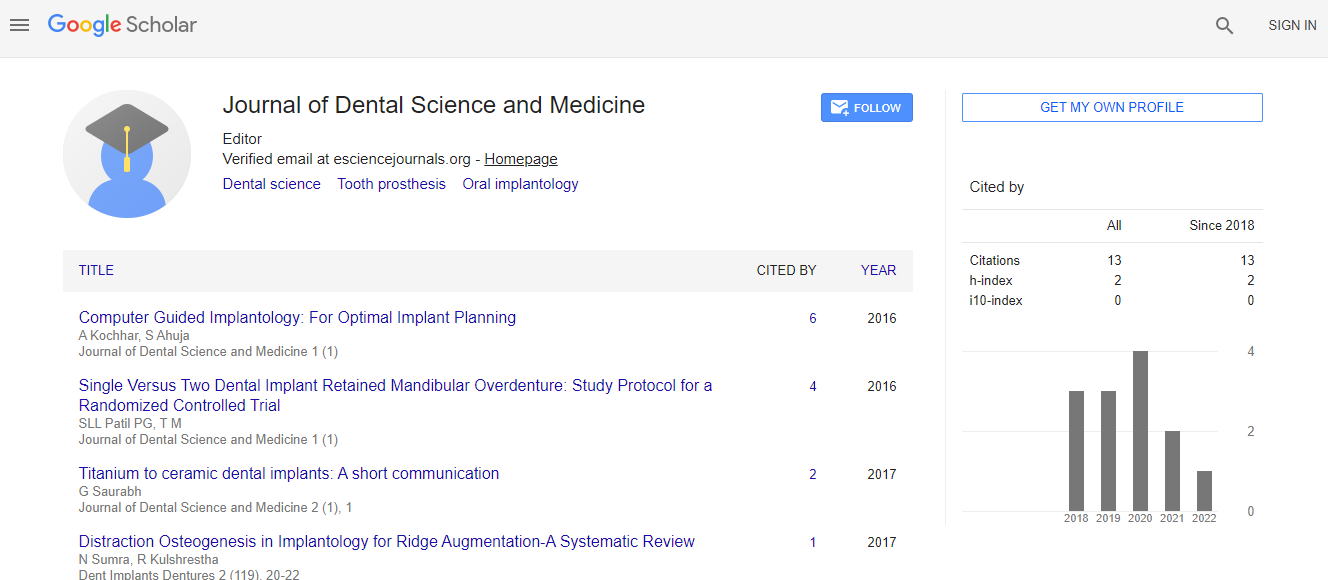Research Article
Implant Stability Measure: Critical Review of Various Methods
Saurabh G* and Rubina K
Axiss Dental Pvt. Ltd, Whitefield, Bengaluru, Karnataka, India.
- *Corresponding Author:
- Saurabh G
Axiss Dental Pvt. Ltd
Whitefield, Bengaluru
Karnataka, India
Tel: +91 9916203455
E-mail: saurabh.ravzz@gmail.com
Received Date: February 26, 2016; Accepted Date: July 18, 2016; Published Date: July 20, 2016
Citation: Saurabh G, Rubina K (2016) Implant Stability Measure: Critical Review of Various Methods. Dent Implants Dentures 1:110. doi:10.4172/2572-4835.1000110
Copyright: © 2016 Saurabh G, et al. This is an open-access article distributed under the terms of the Creative Commons Attribution License, which permits unrestricted use, distribution, and reproduction in any medium, provided the original author and source are credited.
Abstract
The prerequisites of a successful dental implant are the achievement and maintenance of implant stability. Implant stability may be well-defined as the lack of clinical mobility that is also described as osseo integration. As a mechanical phenomenon, primary implant at placement is associated with quantity and quality of the local bone, the kind of implant method and placement used. Secondary implant stability is related to the increased instability attributable to the formation of bone and to remodel it at the implant tissue interface and in the neighboring bone. Several ways are there to evaluate the implant stability like the periotest, cutting resistance’s clinical measurement throughout implant placement and reverse torque test. The aim of this article is to bring to light the different techniques of determining implant stability.

